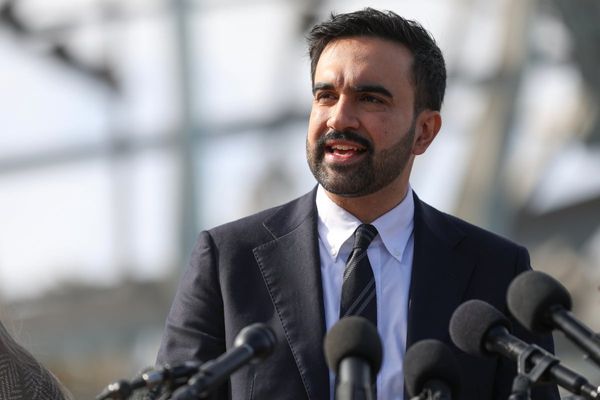
In his first address to the nation after Operation Sindoor, Prime Minister Narendra Modi declared the operation as the new normal in India’s fight against terrorism, firmly stating that the military campaign against Pakistani terror infrastructure and military sites would continue into the foreseeable future.
“We have just postponed our strikes against Pakistan, depending on the actions Pakistan takes in the future,” Modi said in his televised public address. “If there is any further terrorist attack on India, we will respond with crushing retaliation. We will not tolerate nuclear blackmail. We will take action on our terms,” he added.
On May 10, before the US-mediated ceasefire came into effect, pausing “firing and military action,” India warned Pakistan that any future act of terror would be treated as a direct act of war.
New Delhi’s hardened stance – linking terrorism with military force – signals a strategic shift in engagement, aimed at deterring Islamabad from continuing its proxy war through terrorist groups.
This declaration establishes that military action will become the new norm in India’s response to Pakistan-sponsored terrorism, says Ajay Bisaria, India’s former High Commissioner to Pakistan, who was recalled after the Pulwama attack.
“Following the 2016 surgical strikes after the Uri attack and the 2019 Balakot airstrikes, it was implicitly clear that India would no longer tolerate cross-border terrorism,” Bisaria said. “This new doctrine, post-Operation Sindoor, now explicitly states that any such act will receive a decisive and forceful military response.”
Global precedent
The new doctrine has a precedent in the US’s ‘War on Terror,’ launched in the aftermath of the 9/11 attacks, employing hard military force to dismantle terrorist networks. The term “global war on terror” later encompassed diplomatic, financial, and other actions to deny terrorists funding or safe havens.
President George W Bush’s decision to initiate military campaigns against non-state actors was widely criticised as a dangerous precedent, with disproportionate use of force against extremist groups. Scholars like Noam Chomsky and organisations like Human Rights Watch highlighted the unintended consequences on civilians, regional stability, and the rise of new extremist factions. Despite these concerns, more than 70 countries joined the US-led coalition in Iraq, deploying troops and offering financial assistance.
With Operation Sindoor, India has shifted its narrative to the international community, emphasising that it is targeting only terrorist infrastructure in Pakistan, said Ajay Behera, professor of international studies at Jamia Millia Islamia. Diplomatic messaging stressed that the strikes were in direct response to Pakistan’s escalation with the Pahalgam terror attack, which killed 26 civilians.
“By doing so, India has linked military operations to specific terrorist acts, creating a justification for military force against future acts of proxy war,” Behera said. “The new counter-terror strategy reinforces that India does not seek conventional war but will use military force in response to terrorism.”
From restraint to limited operations
In the past, India exercised restraint in responding to Pakistan’s cross-border terrorism, largely due to Islamabad’s warnings that escalation could trigger a ‘nuclear flashpoint’. Pakistani diplomats have repeatedly warned the global community that Indian military responses – especially over Kashmir – could provoke a nuclear conflict. These threats prompted India to develop doctrines like the ‘Limited War Doctrine’ and the ‘Cold Start Doctrine’ to deter Pakistan.
The 2016 and 2019 strikes inside Pakistan were limited, day-long operations. In contrast, Operation Sindoor, which began with attacks on nine high-value terror sites on May 7, was extended over May 8, 9, and 10 after the Pakistani military retaliated using drones and aerial combat vehicles targeting Indian airbases. In response, India struck 11 military sites, including the strategically located Nur Khan Airbase near the Pakistan Army headquarters in Rawalpindi and the Mushaf Airbase in Sargodha, causing significant damage. The Indian military warned that any future provocation would invite decisive retaliation.
Ambiguity around ‘terror act’
Globally, Israel’s ongoing war on Gaza, which has killed over 55,000 civilians, and Russia’s prolonged war in Ukraine have reshaped traditional approaches to dealing with threats from both state and non-state actors, developing broader and often unilateral definitions of terrorism. India appears to be following suit. Yet ambiguity remains about what defines a future “terror act” and how this military doctrine can be operationalised consistently.
“Would India go to war over a terror attack that kills one person? That seems doubtful. But would it respond militarily if 20 were killed? This week’s developments suggest it very well might,” observed Christopher Clary, former country director for South Asian affairs at the US Pentagon and now a professor at Albany University.
As the threshold for action shifts, India’s response mechanism remains uncertain. Jammu and Kashmir’s security landscape includes both cross-border military infiltration and local radicalisation. While many high-profile attacks have been planned across the border, proving the involvement of Pakistani nationals and their ties to state agencies remains a challenge. In the case of the 26/11 Mumbai attacks, despite Ajmal Kasab’s confession and irrefutable evidence of his Lashkar-e-Taiba training, Pakistan denied the attack originated from its soil.
Even so, a strategy modeled on Israel – characterised by rapid retaliation based on actionable intelligence – is likely unsustainable for India over the long term, argues Vappala Balachandran, former special secretary in the Cabinet Secretariat. The preparations for a highly tactical and precisely targeted Operation Sindoor took two weeks following the Pahalgam attack. “Mobilising the army, air force, and navy requires days of preparation, significant financial resources, and inevitably diverts attention from other pressing security and economic challenges.”
Balachandran recalls that during the 26/11 attacks, despite the Mumbai police requesting army assistance on the first night of the siege, National Security Guard commandos could only be deployed the following day by then a lot of killings had taken place.
Need for credible escalation management
This new strategic doctrine, according to Brig (retd) Arun Sahgal, Director at the Forum for Strategic Initiatives, has broken India’s traditional restraint in military responses. It gives the armed forces freedom to choose targets, determine geographic reach, and decide the scale of destruction. However, he warns that India must be mindful of Pakistani escalation and be prepared with credible “escalation management”.
Pakistan is likely to respond to Modi’s warnings with further provocations. And any escalation – through drone strikes, missile attacks, heavy artillery shelling, or cross-border fire – risks spiraling into a protracted conflict or war of attrition.
Sahgal, who has participated in Track 2 dialogues with Pakistani representatives to promote peace, raises a critical question: Is India prepared to escalate militarily every time there’s a major terror incident?
“There are no easy answers,” he admits. “We were just beginning to return to normalcy after the Galwan military standoff with China, and now we are facing a new offensive with Pakistan,” he said, noting that the two countries are increasingly seen as collusive allies. “First, we need to put our own house in order – by effectively addressing local militancy in J&K and curbing cross-border infiltration.”
If you liked this piece, let our reporters tell you why you should subscribe to Newslaundry.
Newslaundry is a reader-supported, ad-free, independent news outlet based out of New Delhi. Support their journalism, here.







